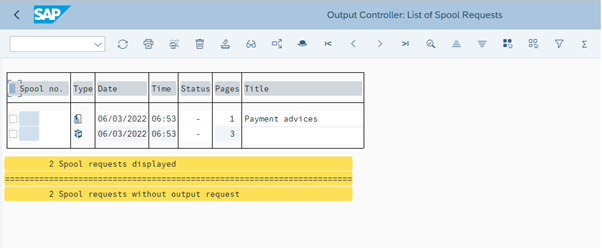Introduction:
The payment run process is an accounts payable process that is used to handle payments to vendors. The process is called an automatic payment program.
The automatic Payment Program (F110) is used to clear the open invoices and post the payments against the invoices. F110 is the standard t-code or Manage Automatic Payment Application is also used to do the same.
In addition to the above, there are also forms sent to customers and vendors about the Payments done called Remittance Advice and Payment Advice based on the payment method configured.
Payment Advice:
A payment advice note is a document or letter of communication sent by a customer or buyer to businesses that states that an invoice has been paid to cheque, NEFT, RTGS, or by any means of electronic transfers, etc.,
It is a letter of communication that acknowledges the seller as to which outstanding invoices have been cleared by the buyer and by what means. Therefore, a payment advice note can be handy when it comes to matching payments to an invoice.
BTE Configuration steps:
From here you can isolate the specific business process you want to enhance/customize.
SAP sample function module SAMPLE_PROCESS_00002040 is available for emailing vendor Remittance Advice. This must be copied as a Zfunction module and make your customization and then save it as ZFM_VENDOR_REM.
The ABAP team can help to copy the function module. You can also use the sap standard function module if no change is required.
Configuration Path : SPRO > SAP Customizing Implementation Guide > Financial Accounting >
Financial Accounting Global Settings > Business Transaction Events (or)
Transaction code: FIBF
Link the newly created custom function module(ZFM_VENDOR_REM.) to the BTE.
The custom function module can be specified following the steps below.
Create A Product:
Navigate as shown below: –
In FIBF > Settings > Products > Of a customer.
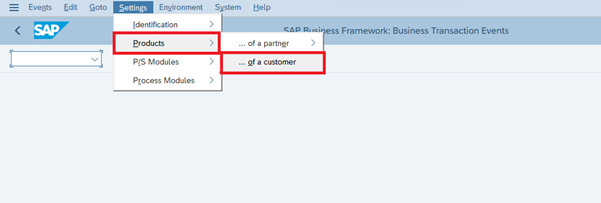
Click On New Entries to create new customer products:

Update the following And Click Save :
In the image below, I created a new product called “ZPMYADV” described as “Email Payment Advice for Vendor”. Note that you can leave the A or Active checkbox blank if you are not yet testing.

For RFC destination, keep that field blank. You do not need to make an entry in this field unless the additional component in question is not in the local system.
If the additional component does not run in the local system, you should enter the standard name of an RFC destination. You can read more about this by clicking on the field and pressing F1 on your keyboard.
Link product and Zfunction module to the BTE process:
Go to Transaction code: FIBF
Navigate as shown below: –
In FIBF > Settings > Process Modules> Of a customer.

Click on New Entries:

Update the following update process 00002040 with the zfunction module(ZFM_VENDOR_REM) or function module(SAMPLE_PROCESS_00002040) and the product we created in the earlier step:

Above, we see that New Product “ZPMYADV”, the custom function module, and the BTE process was entered as new entry. Thus, linking the custom functionality to the BTE.
Click Save.
RFFOAVIS Program:
RFFOAVIS_FPAYM is by default used by SAP for payment advice generation. You just need to give the appropriate variant in the F110 > Printout tab for this program.
Program (RFFOAVIS_FPAYM) generates the vendor payment advice which will be either emailed to the vendor (if the vendor email address is maintained) or will generate a spool request (in case no email address is maintained in vendor master).
Create variant for the program – RFFOAVIS_FPAYM :
Go to Transaction code: SE38 => Update the following and Execute :
Program Name: RFFOAVIS_FPAYM
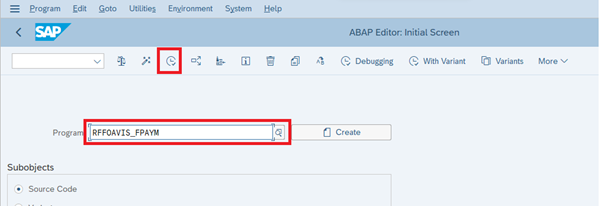
Forms:
There are three kinds of forms that can be used in SAP:
- SAP scripts – F110_US_AVIS (or)
- SMART FORMS (or)
- Adobe Forms – F110_AVIS_INT
For payment advice, we can use all three kinds of forms.
SAP SCRIPTS:
- This is the default configuration provided by SAP.
- Standard script for the payment advice: ‘F110_US_AVIS’
SMARTFORMS:
- There is no standard way of customizing smart forms in SAP for Payment advice.
- So maintain the form names in one table based on the company code and the payment method. In the program call the form name and in the part of the code in the standard include call the form name and smart form name.
- In case of the classic payment medium program we can custom a Z Program.
- In case of the Payment medium work bench always the program RFFOAVIS_FPAYM is called.
Adobe Forms:
- Adobe forms configuration can be done only in the Company code level not on the payment method level.
- SAP has already provided standard Adobe forms for the Payment advice.
variant for the program :
Update the following:
- Printer: LP01
- SAP-script P Advice Form: F110_US_AVIS
- Print Immediately: Checked
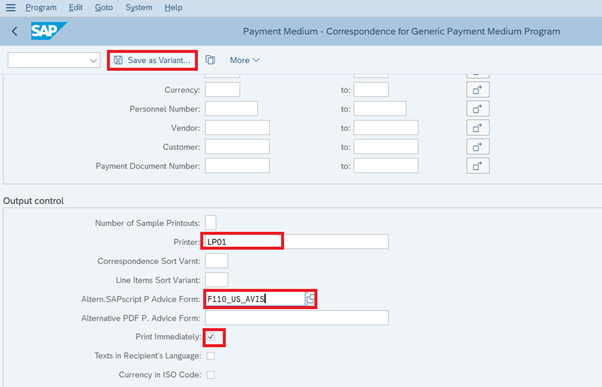
Click Save as Variant.
Update the following and Click Save:
- Variant Name: Paym_ADV1
- Description: Payment Advice
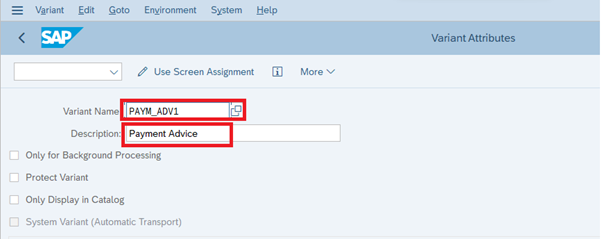
Above , Variant for the program is successfully created in the name of “PAYM_ADV1” with description “Payment Advice”
Copy FI_PAYMEDIUM_SAMPLE_41 AS ZFI_PAYMEDIUM_SAMPLE_41:
You can sometimes use the event module 41 for the automatic creation of the payment medium correspondence.
To do so, copy the example module FI_PAYMEDIUM_SAMPLE_41 to a customer module and use the source code defined in this below.
Replace in the example source code with a valid variant for the report rffoavis_fpaym.
Code:
FUNCTION zfi_paymedium_paymadv_41 .
*"----------------------------------------------------------------------
*"*"Local Interface:
*" IMPORTING
*" VALUE(I_FPAYH) LIKE FPAYH STRUCTURE FPAYH
*" VALUE(I_FPAYHX) LIKE FPAYHX STRUCTURE FPAYHX
*" TABLES
*" T_FILE_OUTPUT STRUCTURE FPM_FILE
*" CHANGING
*" REFERENCE(C_WAERS) LIKE FPAYH-WAERS
*" REFERENCE(C_SUM) LIKE FPAYH-RWBTR
*"----------------------------------------------------------------------
DATA : lc_jobname LIKE tbtcjob-jobname,
lc_jobcount LIKE tbtcjob-jobcount,
lc_jobreleased LIKE btch0000-char1.
CONCATENATE 'PAYM_ADVICES:' i_fpayh-laufd '/' i_fpayh-laufi
INTO lc_jobname.
CALL FUNCTION 'JOB_OPEN'
EXPORTING
jobname = lc_jobname
IMPORTING
jobcount = lc_jobcount
EXCEPTIONS
OTHERS = 1.
IF sy-subrc NE 0.
CALL FUNCTION 'FI_PAYM_MESSAGE_COLLECT'
EXPORTING
i_msgid = sy-msgid
i_msgty = 'E'
i_msgno = sy-msgno
i_msgv1 = sy-msgv1
i_msgv2 = sy-msgv2
i_msgv3 = sy-msgv3
i_msgv4 = sy-msgv3
i_probclass = 'E'.
EXIT.
ENDIF.
SUBMIT rffoavis_fpaym
USING SELECTION-SET 'PAYM_ADV1'
USER sy-uname VIA JOB lc_jobname NUMBER lc_jobcount
WITH zw_laufd = i_fpayh-laufd
WITH zw_laufi = i_fpayh-laufi
WITH zw_xvorl = i_fpayh-xvorl
AND RETURN.
CALL FUNCTION 'JOB_CLOSE'
EXPORTING
jobcount = lc_jobcount
jobname = lc_jobname
strtimmed = 'X'
IMPORTING
job_was_released = lc_jobreleased
EXCEPTIONS
OTHERS = 1.
IF sy-subrc NE 0.
CALL FUNCTION 'FI_PAYM_MESSAGE_COLLECT'
EXPORTING
i_msgid = sy-msgid
i_msgty = 'E'
i_msgno = sy-msgno
i_msgv1 = sy-msgv1
i_msgv2 = sy-msgv2
i_msgv3 = sy-msgv3
i_msgv4 = sy-msgv3
i_probclass = 'E'.
ENDIF.
ENDFUNCTION.Activate the new module – ZFI_PAYMEDIUM_SAMPLE_41.
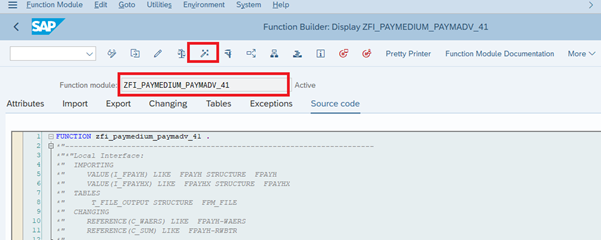
Define the customer module in event 41:
- Call transaction OBPM1 (display mode).
- Select the format used.
- Click “Customer settings for Format” (TA OBPM3).
- In the dialog structure: Choose “Event modules”
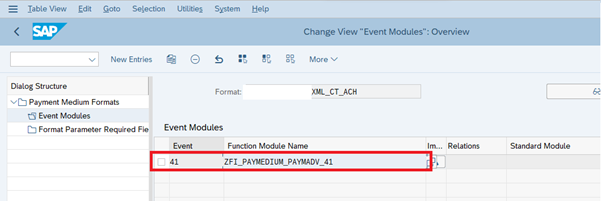
Payment advice notes by mail: Introductory text with attachment:
If you want to send the payment advice note in the mail attachment and an introductory text is supposed to appear in the mail.
Maintain Introductory Text:
SO10 is used to create Standard texts for use in SAP scripts. This basically permits reusability of standard texts across many SAP scripts. These also can be defined in different languages & can be used by specifying the language option in a SAP script.
Go to Transaction code: SO10
Specify an introductory text (language-dependent) for the text ID FIKO. Select your text Name
Text Name: ZFI_VENDOR_PAYMENT_ADVICE
Text ID: FIKO
Language: EN
And click on create. Maintain the text and save it.
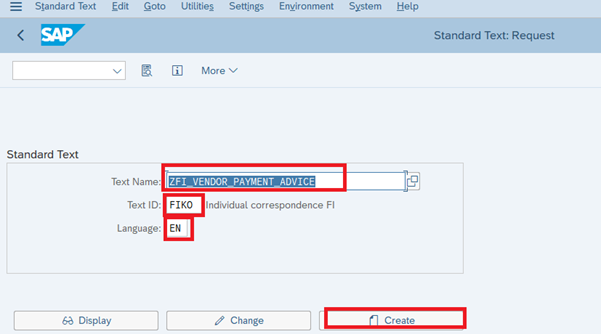
Updating Text Name in SAMPLE_PROCESS_00002040 :
Go to Transaction code: SE38
Edit the ZFM_VENDOR_REM. Which is Z copy of SAMPLE_PROCESS_00002040.
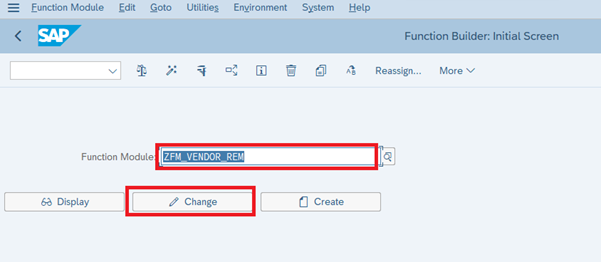
Enter it in uppercase letters in the field FINAA-NAMEP in the process exit 2040 (call from include RFFORI06).
Update the Text Name.
c_finaa-namep: ‘ZFI_VENDOR_PAYMENT_ADVICE’
Save the Change and Activate the Zfunction Module.
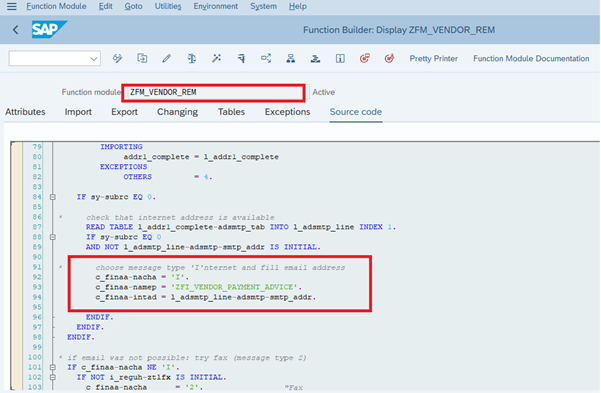
Master data requirements:
Vendor Master
Transaction code: BP:
Fiori Application: Maintain Business Partner
Email address should be updated as shown below in the vendor master:
- BP Role: Business Partner (Gen.)
- Tab: Address > Communication
- Email: XXX@gmail.com
- Standard Method: INT Email
Make the changes and save the bp.
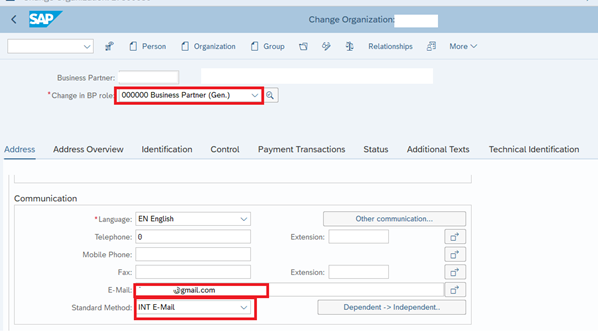
Manage Automatic Payments:
Payment run process is an accounts payable process that is used to handle payments to vendors. The process is called automatic payment program.
With the transactional app Manage Automatic Payments, you can schedule payment proposals or schedule payments directly and get an overview of the proposal or payment status. The app identifies the overdue invoices and checks whether all the required payment information is complete.
The Payment Process includes the Following Steps
- Invoices are Entered
- Pending Invoices are analysed for due date
- Invoices due for payment are prepared for review
- Payments are approved or modified
- Invoices are paid
Start fiori app “Manage Automatic Payments” and Click Create Parameter.

On the first screen, you need to enter run date and identification. In the identification field, give a five-characters alphanumeric code that will be used to identify the payment program. A combination of the run date and identification is used to identify the program in SAP system.
Fill the Run date and identification and click Create:
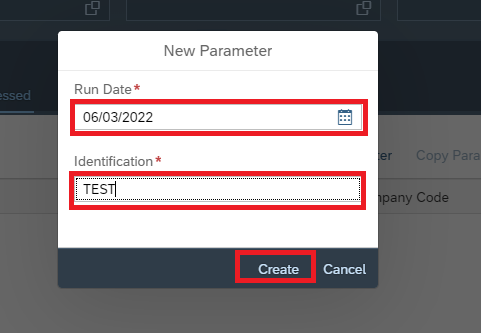
In the Parameters Tab, We have to define the following and Click Save
- What is to be paid – Docs. Entered Up to
- What payment methods will be used – Payment Methods
- When will the payments be made – Posting Date?
- Which company codes will be considered – Company Codes?
- How are they going to be paid – The payment Method Sequence decides the Priority of the Payment Method
- Enable Additional log – To get some additional log information.
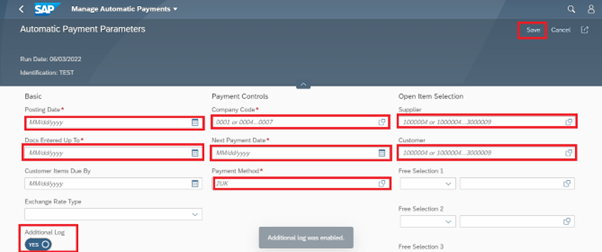
You can see the payment parameter created :
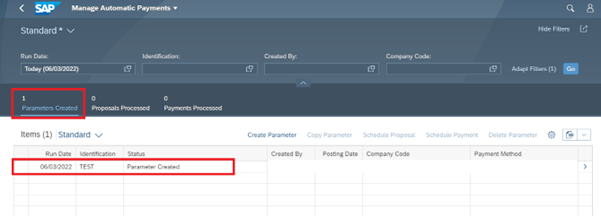
Create Payment Proposal:
Selected the Parameter and click schedule Proposal:
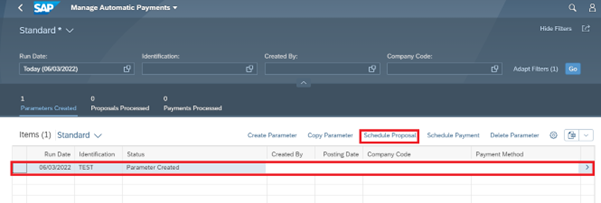
When you click on Proposal the system is going to ask whether you want to create it immediately or want to schedule it for a time in the future. For this demo, we are going to run it immediately. You should tick the checkbox for creation of payment medium.
Make sure you select “Start Immediately” and then click on Schedule.
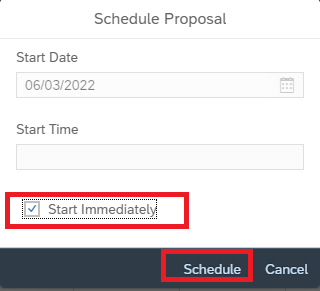
You can see the payment proposal in the respective tab.
A payment proposal is generated based on the parameters.

Review Payment Proposal:
- Click on the arrow button to review the document selected in this run.
- The system will list all the vendors that have been included in the payment proposal.
- We can view the Proposal Log for possible errors by Pressing the Proposal Log Button.
- We can edit the proposal to block the some payments if we want, Press the Edit Proposal Button.
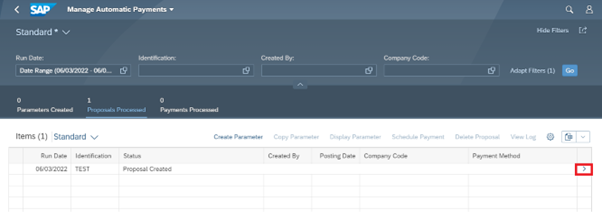
Payment Run:
Go to Proposal and click on Schedule Payment to run Payment.
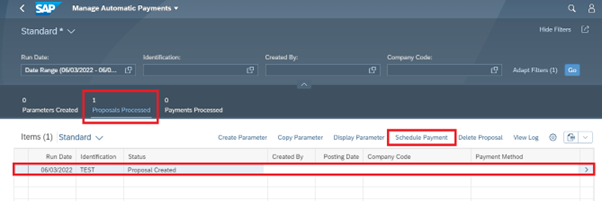
Check “Start Immediately” to start the payment run instantly and then click on Schedule.
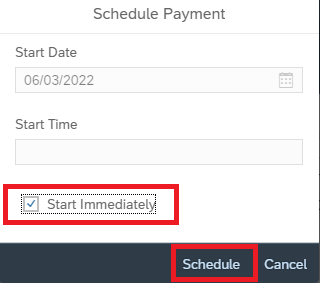
Go to “Payments Processed” and You can see the payment posted.
We can check the status of the Payment run on the Status Tab.
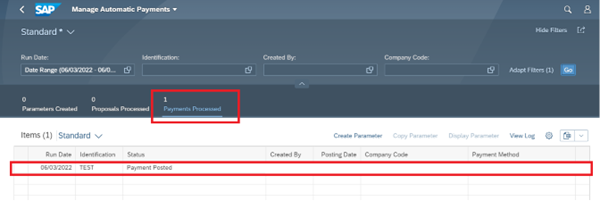
You can also select the posted payment to see the log:
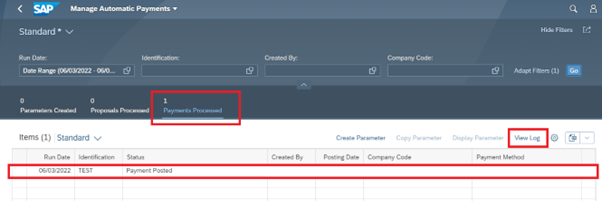
Note: If you have approvers for the payment, then the batch will be generated. Email will get triggered after the Payment approvals.
To check whether the advice is sent to the vendor by Email:
Transaction code SOST is used to display and administer of all messages sent using SAP connect. The program displays send requests that are being sent, or have already been sent by using SAP connect. In this transaction, a send request always contains just one recipient.
Transaction code: SOST
- You can see the email that is being triggered / delivered in Transaction code SOST.
- We can found the email send with respect to our payment time and date.
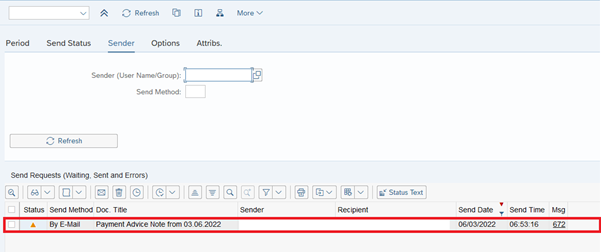
Review Email:
Select the Email Log and Click Display Document Icon:
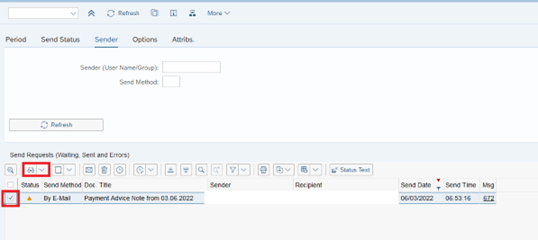
You can see the body of the mail:
The body of the email is coming from the text we maintained in SO10 i.e. ZFI_VENDOR_PAYMENT_ADVICE.
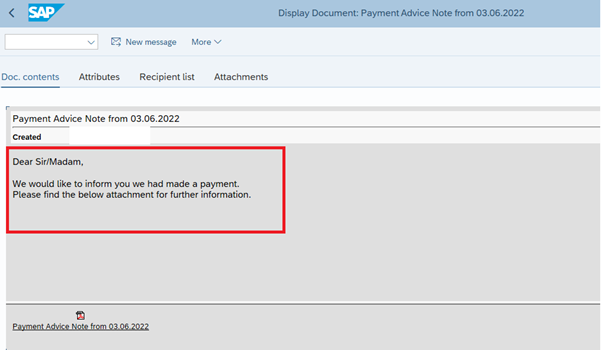
Click on the PDF icon to see the attachment (Payment Advice) send:
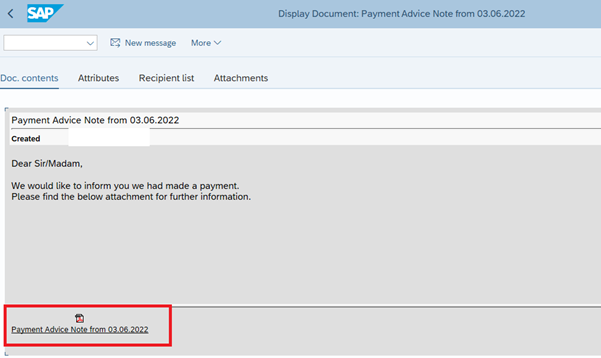
Review Payment Advice :
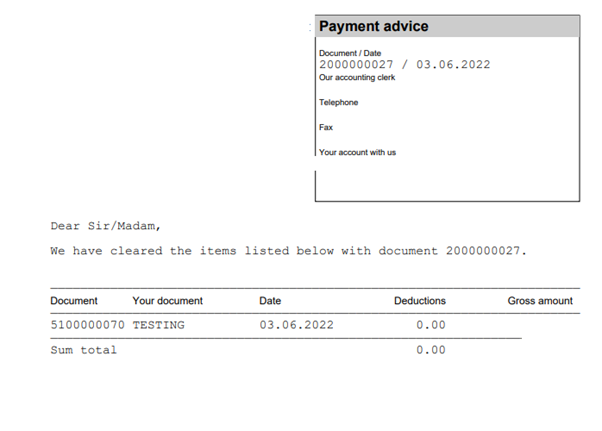
Review Spool Request:
The spool system uses a spool request to store the print data temporarily and to be able to access it. The data is stored in a temporary format. You can also display the print document. The system automatically assigns a 10-digit ID number to a spool request.
Vendor payment advice will either be emailed to the vendor (if email address is maintained in the vendor master) or will generate a spool request if email address is not maintained. The spool request can be viewed and printed through transaction code sp02.
You can also see the Payment output in spool request:
